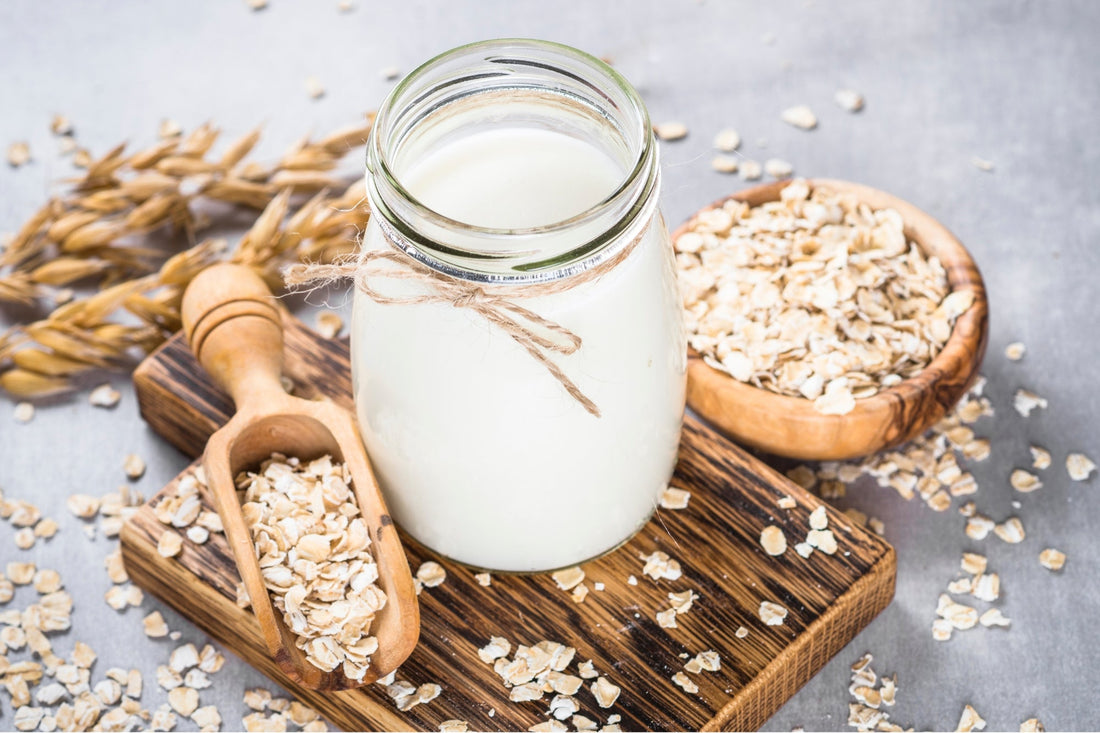1. Navigating the Choice Between Nut Milks and Dairy Milk
In the ever-evolving landscape of health and nutrition, one debate that consistently garners attention is the comparison between nut milks and dairy milk, especially when it comes to their roles as protein-rich superfoods. This article aims to delve deep into this discussion, exploring and comparing the nutritional profiles of nut milks and dairy milk. Our hypothesis is that while both options offer unique nutritional benefits, certain aspects such as protein content, vitamin and mineral composition, and overall health impact may render one superior to the other for those particularly focused on a protein-rich diet.
As we embark on this comparative journey, we'll consider the needs and preferences of Nutrition Enthusiasts, aligning with Maiva's commitment to providing insightful, health-focused content.
2. Production Process and Its Impact on Nutritional Value
The way nut milks, and dairy milk are produced plays a pivotal role in determining their final nutritional content. This section delves into the production techniques for both, highlighting how these methods influence their nutritional profiles and discussing the use and impact of additives.

2.1. How Nut Milks are Made?
Nut milks are created through a process that typically involves soaking nuts like almonds, cashews, or hazelnuts in water to extract their flavor and nutrients. This is followed by blending them, and then straining the mixture to remove solid particles. This method aims to extract the flavors and nutrients from the nuts into a liquid form.
2.2. Impact on Nutritional Value of Nut Milks
The soaking and blending processes can affect the nutrient concentration in nut milks. While some water-soluble vitamins may be more readily available, the straining process may remove beneficial fibers and proteins found in whole nuts.
Additives in Nut Milks: Many commercial nut milks are fortified with vitamins and minerals, such as calcium and vitamin D, to enhance their nutritional profile. Additionally, some brands add thickeners, sweeteners, and flavorings, which can impact the overall healthfulness of the product.
2.3. Dairy Milk Production and Nutritional Impact
As we expect, it starts with milking cows to extract the milk from the udders. The raw milk then goes to a dairy processor for pasteurization and homogenization.
Now here is where it gets interesting.
Dairy milk undergoes a series of processes before reaching consumers. Key steps include pasteurization, which kills harmful bacteria, and homogenization, which prevents the cream from separating. These processes are crucial for extending shelf life and ensuring safety.
Nutritional Alterations in Diary Milk
Pasteurization has a minimal effect on the nutritional value of milk; most vitamins and minerals are retained, and the protein remains highly digestible. However, it can lead to a slight decrease in certain water-soluble vitamins. Homogenization does not significantly alter the nutritional content but impacts the fat structure in the milk.
Use of Additives in Dairy Milk
Additives in dairy milk are usually limited to vitamins A and D, enhancing its nutritional profile. Vitamin D fortification is particularly important, as it aids in calcium absorption, a key benefit of dairy milk. To increase shelf life and texture, various additives are used in milk production. Emulsifying agents like lecithin help evenly distribute the fat. Stabilizers like carrageenan provide a rich, creamy consistency and thickening agents like gums improve texture too.
Understanding the production process and the role of additives is crucial as it impacts not only the nutritional content but also the quality and purity of food. In the next section we undertake a detailed comparison of these two types of milk, focusing on their protein content, vitamins, and minerals, thus offering a comprehensive view of what each contributes to a balanced diet.
3. Protein Rich Content and Quality in Nut Milks vs Dairy Milk
Protein Rich Content in Nut Milks
When it comes to protein, nut milk generally offers lower amounts compared to dairy milk. For instance, almond milk typically contains about 1 gram of protein per cup, whereas dairy milk boasts about 8 grams per cup. The protein in nut milks is also not 'complete,' meaning it doesn't contain all essential amino acids required by the body. However, certain processed nut milks are fortified with additional proteins and essential amino acids to bridge this gap.

Protein Rich Content in Diary Milk
When it comes to protein, cow's milk delivers a power-packed proteins rich punch. One cup contains about 8 grams of high-quality protein with essential amino acids. The abundant casein and whey proteins make dairy milk a protein rich choice for building and repairing muscles
4. Superfood Qualities: Vitamins and Minerals in Nut Milks vs Dairy Milk
Vitamin and Mineral Content in Nut Milks
Nut milk naturally contains certain vitamins and minerals, but their levels are often lower than those found in dairy milk. Common nutrients in nut milks include vitamin E, magnesium, and zinc. Some commercial nut milks are fortified with calcium, vitamin D, and sometimes B vitamins to enhance their nutritional value.
Vitamin and Mineral Profile of Dairy Milk
Dairy milk is a rich natural source of calcium, essential for bone health, and is also often fortified with vitamin D to aid in calcium absorption. It contains other vital nutrients like potassium, which is crucial for heart health, and vitamin B, necessary for energy metabolism. The presence of these nutrients makes dairy milk a highly nutritious option for a variety of dietary needs.
5. Conclusion: Protein Rich Superfoods - Key Nutritional Differences and Considerations
In summarizing the nutritional comparison between nut milks and dairy milk, several key differences emerge, particularly in protein content, vitamin and mineral composition, and the use of additives and preservatives.
Nut milk typically offers lower protein levels compared to dairy milk and lack complete proteins, although some are fortified to compensate for these deficiencies.

In terms of vitamins and minerals, dairy milk naturally provides a rich array of nutrients like calcium, vitamin D, and vitamin B, which are essential for bone health, heart health, and energy metabolism. Nut milks, while lower in these nutrients naturally, are often fortified with vitamins and minerals, making them a viable alternative.
A significant consideration in this comparison is the use of additives and preservatives. Commercial dairy milk, while highly nutritious, may contain higher levels of preservatives, which could potentially undermine its nutritional benefits.
The choice between these protein-rich superfoods should be ultimately based on individual health goals, dietary preferences, and considerations regarding additives and processing. Nut milk might offer an advantage for those seeking fewer additives and a more plant-based diet, while dairy milk remains a robust source of natural nutrients and high-quality protein


